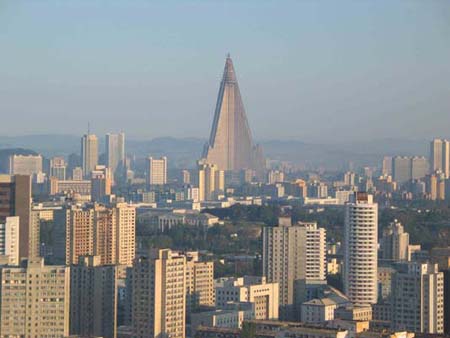 Pop Art lends itself to mockitecture in many ways. The incorporation of commercial imagery into painting and sculpture is a good example of not only communicative art, but also of the new humanism which mockitecture brings with it. People need icons and references to things that they can relate to. It is the difference between "Aphrodite" and "Gold Marilyn Monroe." When was the last time you saw Aphrodite hanging on an everyday person's wall? The image of Marilyn Monroe not only appeals to a high-art-as-meaning interpretation, but also can appeal to the people. This is actaully more important in architecture than in art, because building are expressively designed to interact with normal, everyday people. Art does not have this responsibility.
Pop Art lends itself to mockitecture in many ways. The incorporation of commercial imagery into painting and sculpture is a good example of not only communicative art, but also of the new humanism which mockitecture brings with it. People need icons and references to things that they can relate to. It is the difference between "Aphrodite" and "Gold Marilyn Monroe." When was the last time you saw Aphrodite hanging on an everyday person's wall? The image of Marilyn Monroe not only appeals to a high-art-as-meaning interpretation, but also can appeal to the people. This is actaully more important in architecture than in art, because building are expressively designed to interact with normal, everyday people. Art does not have this responsibility. What is commercial imagery? Well it is the decorated shed, "where...ornament is applied independently of [structure and space]." Ornament applied in the form of super graphics and pattern is the easiest way to make funny or fun architecture. Is this a revival of postmodernism? in some ways, yes. Unfortunately, mockitecture must seek to incorporate other aesthetics in order to disassociate from postmodernism and the stigma attached.








